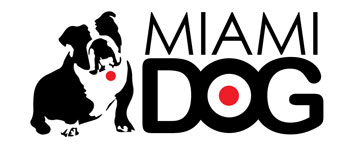
Food puzzles enrich your dog’s life and can be used as feeding bowls. They slow down mealtime for a dog who scarfs his food and double as a thinking toy. Aside from choosing the correct puzzle level, which ranges in difficulty from levels 1 to 4, teaching your dog to use a food puzzle enriches both you and your dog!
How to choose the best dog food puzzle
Consider what your dog enjoys doing: Rolling a ball, pawing at something or just sniffing.
Choose your food puzzle based on your dog’s interests.
Interactive puzzles for dogs have different ways to distribute the food you place in it. Some are ball-shaped and dispense food as they roll, while others require your dog to lift or slide pieces with his paw or muzzle. Dogs sniff out the hidden food treasures in simple food puzzles called snuffle mats and even simpler, dogs lick food from a mat.
3 tips for picking the best dog food puzzle
- Ask yourself: What’s a natural thinking toy for my dog? After all, using a puzzle toy should be fun for the dog, not frustrating.
- For beginners, choose the easiest level interactive puzzle. Set your dog up to succeed, so that he wants to continue using it.
- Choose the right size and shape for your dog. Got a large dog? Choose a durable and larger food puzzle. Conversely, if you have a toy-sized dog, the puzzle toy should be lightweight enough for him to manipulate.
Dog food puzzle training tips
First: Don’t rush the process. Rushing frustrates your dog. Only after he feels confident with the easier food puzzles, teach him to use more difficult levels and toys.
Teach your dog to use a food puzzle in 7 steps
- Wait until your dog is hungry, so he’s motivated to find the food inside the puzzle.
- Use enticing, high-value treats, such as meat, fish or cheese treat with a strong odor. I suggest freeze-dried liver, fish or cheese in small pieces. Dry treats work best for puzzles that dispense goodies like balls or have pieces that need to be maneuvered. For lick mats and bowls, use a moist food or mix.
- Start at an easy level (1 to 2) and put a lot of treats in the toy. Do not freeze the toy, even if it’s meant to be frozen, such as a Kong, Toppl, maze dish or lick mat, because this increases the difficulty level.
- Let him sniff and interact with the puzzle toy.
- Praise and encourage your pup while he explores the toy.
- Give him time and space to manipulate the toy. Don’t rush him.
- End the session on a positive note after he’s gotten some of the treasured treats out of the puzzle.
If the toy seems too difficult or not the right one for your dog, end the session on a good note by playing with him. Next time, try a different puzzle toy that better suits his level and interest.
Here are 6 of our favorite dog food puzzle toys.
After you see what toys work best with your dog, add more difficult toys to his repertoire.
Food puzzles lessen boredom and increase the quality of your dog’s life. Choosing the one that’s best for your pup will make the journey productive and fun. The mental stimulation the toys provide will enrich both your and your dog’s lives. And your pup will gain confidence in the process.
